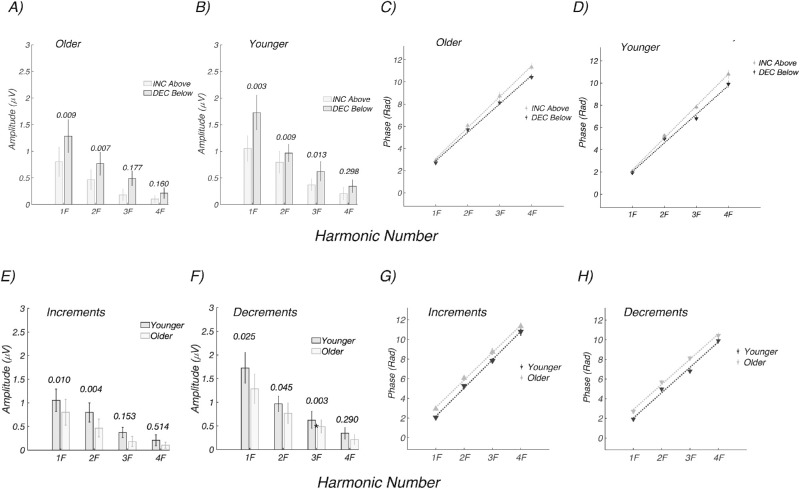Figure 6.
Experiment 3: Amplitude and delay estimates for older (n = 19) and younger (n = 12) participants. (A) Response amplitudes for decrements (dark bars) are larger than for increments (light bars) in the older participants. (B) Response amplitude for decrements (dark) are larger than for increments (light) in the younger participants. (C) Responses are faster for decrements than for increments in the older participants (149.3 ± 3.2 vs. 162.4 ± 2.5 ms, respectively). (D) Responses are faster for decrements than for increments in the younger participants (150.3 ± 5.0 vs. 167.7 ± 2.4 ms, respectively). (E) Response amplitudes are larger for increments in the younger participants (dark bars) than older participants (light bars). (F) Response amplitudes are larger for increments in the younger participants (dark bars) than older participant (light bars). (G) Response phase versus harmonic number functions for increments are shifted vertically for older participants. (G) Response phase versus harmonic number functions for increments are shifted vertically for older participants and have a slope difference. (H) Response phase versus harmonic number functions for decrements are shifted vertically for older participants with no change in slope.

